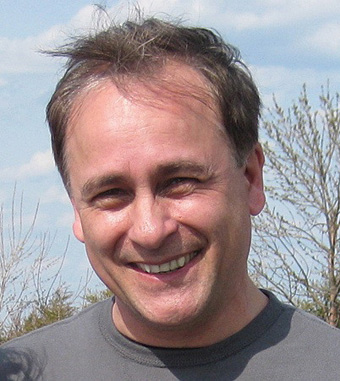Tim Tielman: Preservationist

Get to know a Buffalonian
Tim Tielman, preservationist
Tim Tielman is the executive director of the Campaign for Greater Buffalo, and principal of The Neighborhood Workshop, LLC., a new urban design consultancy. For years he has been involved with urban planning issues in Buffalo, and he is—depending on which side of the fence you happen to be standing—either beloved as a preservationist or bemoaned as an obstructionist. Which means he must be doing something right.
Why do you think it’s important to preserve buildings?
Preserving buildings, great and small, is part of the preservation and re-establishment of the urban way of life and culture. Our antiquated zoning laws and economic condition mean that for every building not preserved, we lose a bit of environmental, social, and economic sustainability. In short, we have to preserve and rebuild the urban ecosystems that made Buffalo a successful, useful place to manufacture things and ideas and nurture citizens.
You get labeled an obstructionist. If that’s so, what do you get by obstructing things?
Blocking the self-serving schemes of the local kakistocracy is simply coincidental to a democratic process of building a better city, which is positively constructionist. Constructive change for the public benefit is our goal.
What would you like to see happen on the Buffalo waterfront?
The plan that is still in force that was created in 2004, and build connections, not barriers, to downtown and the Old First Ward. The $17.5 million parking ramp planned for Bass Pro is still being built. That barrier to downtown must be stopped, and a “Public Lawn” built on that public land. That would be a great public asset and interim use.
Can you think of any big, dumb plans that didn’t go forward because of you, or people like you?
A $300,000,000 convention center that we called the “Urban Death Star,” for one. It would have destroyed six square blocks of downtown and hobbled county finances for 30 years. Many of the buildings that would have been destroyed are now loft apartments.
Things never seem to change in Buffalo. Why do you think that is?
The cunning of the governmental-development complex. They wrote the laws we all have to work with, from Urban Renewal to zoning, to state development authority funding and powers.
BONUS: What would you like to see happen around the Richardson Complex? The Peace Bridge neighborhood?
The Richardson has dual resources that must be protected: the buildings and sheer open space. That open space can’t be nibbled away and must be restored as Olmsted conceived it. We don’t need to demolish six square blocks of Prospect Hill for a Peace Bridge Duty Free Plaza and a parking ramp. We need a low-level crossing with a lift bridge in the International Railroad Bridge corridor, which has disused industrial lands on both sides of the border.
DOUBLE BONUS: f you could pick the one historical element in town that’s been lost, to the area’s detriment, which would it be?
Shelton Square and the buildings and streets that used to define it.
blog comments powered by Disqus|
Issue Navigation> Issue Index > v9n39 (Week of Thursday, September 30) > Tim Tielman: Preservationist This Week's Issue • Artvoice Daily • Artvoice TV • Events Calendar • Classifieds |









 Current Issue
Current Issue